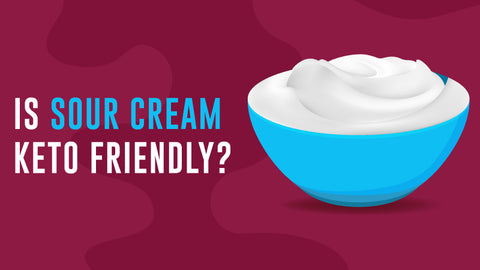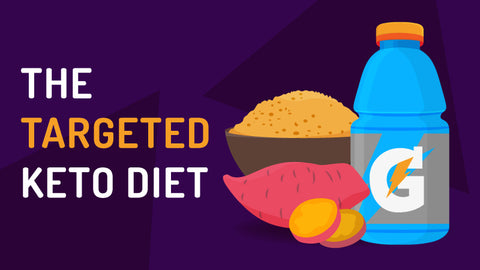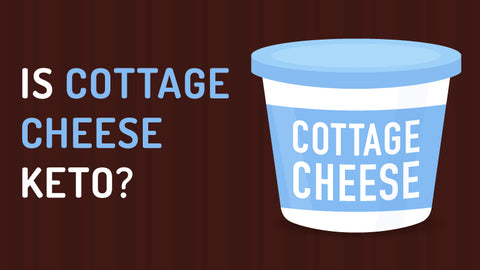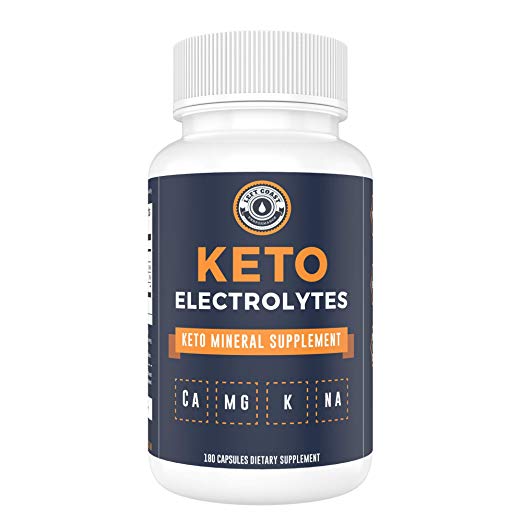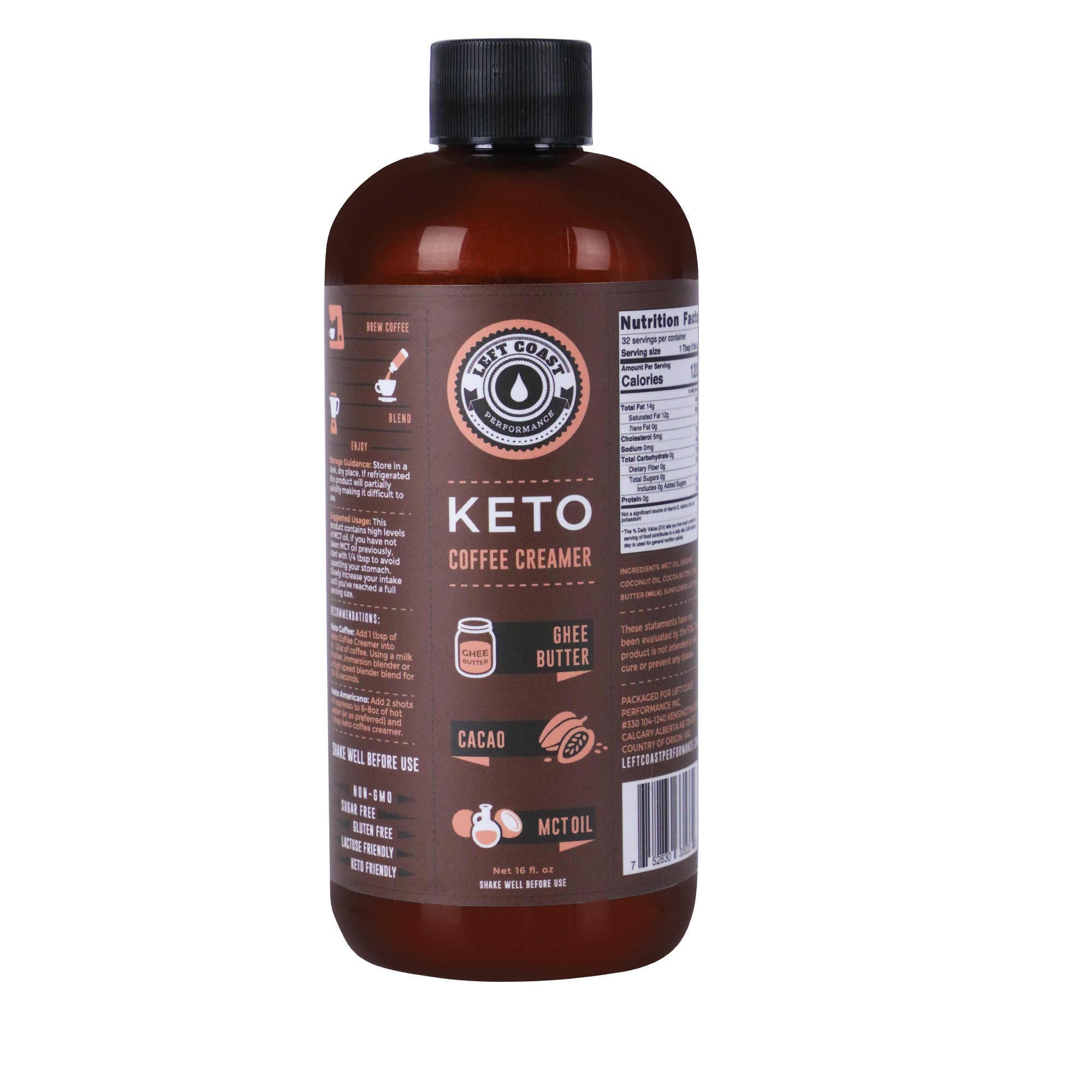How To Break Through A Weight-Loss Plateau on a Low Carb Keto Diet
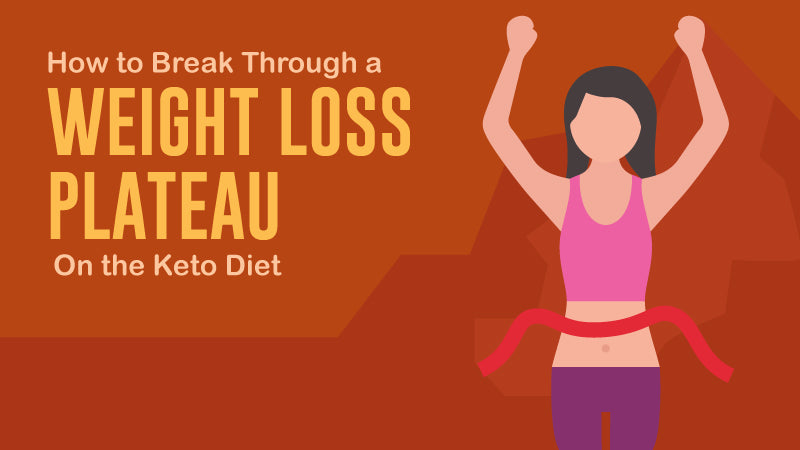
on October 25, 2019
If you are new to keto, you may have been pleasantly surprised at the initial rapid water loss in the first week. Likely 5 or more pounds. You’re thinking, “Keto rocks!”
But then the bathroom scale suddenly seems frozen. Your weight loss comes to a halt. Maybe it even starts to inch back upward.
“What’s wrong?” You ask yourself in frustration. You’ve entered a genuine keto funk.
Actually, nothing’s wrong. You’ve just hit your first keto weight loss plateau which is very common.
The good news is that breaking through a weight loss plateau on keto is very doable.
This article will walk you through what the common causes of a keto weight loss plateau are and how to break through them regardless if you've been on the keto diet for years or just started.
What Exactly Is a Keto Plateau?
When you reach a plateau on keto, you’ve reached a state of little or no change in weight loss after a period in which you had made some steady progress.
First to clear up a common misconception: The initial weight loss on keto is likely due to water - not fat - loss. (1)
In fact, the higher your carb intake had been before starting a ketogenic meal plan, the greater the initial water loss will be.
This is due to a drop in blood sugar which results in decreased insulin production as you cut out carbs. The insulin drop removes a lot of water along with it.
This water loss is also why replenishing electrolytes is super-important on a ketogenic diet especially in the beginning.
How Long Does a Keto Plateau Last?
Unfortunately, there is no set time for how long your keto plateau will last.
Whether your plateau will be long or short depends on a lot of different factors. The key to getting back on track with your weight loss journey is to understand why you got stuck in the first place which is what we're going to help you identify.
How Do Low-Carb Diets Help with Fat Loss?
Many low-carb approaches to fat loss are based on the idea that lowering insulin, a hormone responsible for fat storage, will lead to weight loss. This notion is referred to as the carbohydrate-insulin model. (2)
Many studies have shown that low-carb diets - as compared to others, including low-fat diets - lead to more weight loss in the first 6-12 months. (3)
There are several reasons why low-carb diets are believed to lead to greater weight loss. Admittedly, they are all controversial. On a low carb diet the assumption is that you’ve increased the fat and protein to keep your total daily caloric intake within the normal range for your sex, age, and activity level.
More fat and protein in the diet gives you a greater feeling of satiety (sense of being full) which means you’ll eat less.
Second, these macronutrients lower your blood glucose level and, consequently, your blood insulin level. So, fat storage is not promoted.
Third, studies suggest that people on low-carb diets burn 200-300 more calories/day than individuals on high-carb diets, giving the low-carb group a huge metabolic advantage. The higher-burning advantage leads to greater weight loss. (4)
What Causes a Keto Weight Loss Plateau?
There are several possible reasons why you fall into a keto weight loss plateau after a period of gradual and consistent weight loss.
The most likely causes of a keto weight loss plateau are that you’re:
- Not in ketosis. (5)
- Consuming too many calories. (6)
- Consuming too few calories. (7)
- In a state of leptin resistance. (8)
Not in Ketosis
Getting, and keeping your body in a ketogenic state is the goal of a ketogenic diet. It’s what makes the keto diet for weight loss a winning strategy.
What this means is that your body is running on fat - specifically ketones - as a fuel source.
To get into ketosis you need to:
- Provide your body with the right amount of high-quality fats
- Limit the amount of carbohydrates you consume
Eating too many Calories
One gram of fat has more than twice the number of calories than a gram of carbohydrate or protein. Specifically, a gram of fat has 9 calories while a gram of carbohydrate or protein has 4 calories each.
So, your total number of grams of food consumed will be significantly smaller than what it was before you went on keto.
On top of that, as you lose weight, the number of grams and the number of calories your body requires will go down (unless your activity level increases.)
But, if you continue to eat at the same rate and in the same macronutrient proportions as you did at the start of your keto journey, it’s logical that you may begin to even out or possibly gain weight.
Restricting Calories for Weight Loss
If you’ve tried other diets, you’ve surely been told to consume fewer calories to lose weight.
On the surface, this appears to make sense.
However, this doesn't always work - even if you exercise more.
Consuming too few calories while dieting can thrust your body into starvation mode. Consequently, you WILL hold on to fat for self-preservation. (9) As a result, you’ll keep the extra padding you so desperately want to trim off.
Leptin Resistance Kicks in
There is no universally agreed upon definition of the term leptin resistance largely because researchers understand very little about what it is and what causes it. (10).
The following explanation has been proposed to explain the clinical observation that obese patients with elevated levels of circulating leptin are resistant to weight loss even though leptin should reduce both food intake and body weight.
Leptin is both a hormone and a cytokine. (11) As a cytokine, leptin signals other cells during an inflammatory response. Leptin’s exact role in cell signalling is unknown. However, the fact that leptin has this role suggests the immune system is somehow associated with fat cells. This may be another reason why people trying to lose weight should avoid inflammatory foods discussed here.
As a hormone produced by fat cells, leptin tells your brain, that there’s plenty of stored fat in your cells. It signals that you're full. This is why leptin is sometimes called the satiety hormone.
When everything’s normal, your typical reaction to feeling this way is to stop eating. Essentially, leptin prevents overeating.
For people who wish to lose weight, leptin’s signalling is critical to their success. When it fails, it’s likely that you will consume too many calories and put on more weight.
There’s another crucial role leptin performs.
It regulates how much energy you use and, consequently, how much fat you hold on to. (12) Normally, leptin activates chemical pathways that break down macronutrients (carbohydrates, protein and fat). During the breakdown, usable chemical energy in the form of ATP is produced.
However, when you're leptin resistant, this message doesn’t get through even though you have plenty of leptin. So, you won't lose weight.
To the contrary, leptin resistance makes your body react like it’s starving. You will begin to eat more - or at least feel hungry and have the urge to eat more. You will also conserve energy by holding on to fat stores rather than breaking them down to liberate their energy. In effect, your metabolism slows down. (This is the same effect created when you eat too few calories.)
Some researchers believe that leptin resistance occurs when insulin levels are too high (13). Since insulin levels are highest when carbohydrate intake is high, reducing carbs will reduce insulin levels. Thus, the thinking goes, cutting down on carbs would lower leptin levels and return leptin to function correctly.
In obese individuals, leptin resistance can also become increasingly severe over time as more leptin is released from fat cells, promoting the urge to eat as well as the reduction in energy production (i.e, increased fat storage). (14) Called “leptin-induced leptin resistance,” this vicious cycle would be expected to prolong a keto plateau.
Fortunately, there are ways to become more leptin sensitive and get over a weight loss plateau caused by leptin resistance.
For starters, make sure you’re consuming the right amount of calories for you. Too many or too few can promote leptin resistance. See the section below for some ideas on how to overcome leptin resistance.
How to Break Out of a Keto Plateau?
There are many ways to break out of a keto plateau and get back to losing weight.
Here are the top 11 ways to bust our of your keto plateau.
- Determine YOUR daily calorie needs.
- Gauge your macros proportions carefully.
- Track your macros daily - at least in the beginning.
- Eat high-quality foods.
- Stay away from hidden carbs.
- Avoid hidden calories.
- Cut out carb stand-in foods (keto junk food or “dirty keto”).
- Intermittent fasting.
- Exercise more.
- Sleep better
- Keep stress under control.
1. How Many Calories Do YOU Really Need?
If you’ve been in a keto funk for awhile taking a hard look at your caloric intake is a great first step. A visit with a keto-friendly nutritionist or dietitian may be what’s called for.
It's critical that you determine how many calories YOU really need. Note that your caloric needs will change as you lose weight.
How many calories you require is highly individualized and depends on a lot of factors including age and exercise level. Online calculators can only do so much, a professional can help you figure it out.
2. Gauge Your Macros Proportions Carefully
In general, here’s a recommended guide for macros to keep you in ketosis. This is based on a moderately active person who consumes 1,800 calories a day. Adjust values to suit you.
- 80% of calories from fat (160 grams of fat/day = 11 tablespoons)
- 15% of calories from protein (68 grams of protein/day = 2.4 oz.)
- 5% of calories from NET carbohydrates (23 grams of carbohydrate/day = 0.8 ounce)
For your reference:
- 28 grams = 1 ounce
- 16 oz. = 1 lb.
- 1 tablespoon = 14 grams = ½ ounce
*All conversions are approximate.
You will likely need to experiment with your macros until it’s perfectly suited to you. You may be able to stay in ketosis, for example, with a 70% fat: 20% protein: 10% net carb proportion.
There is no one-size-fits-all when it comes to macronutrients nor to keto. Your gender, age, and level of physical activity are the most important variables.
KETO TIP: Don’t obsess over calorie counting! Download our Keto Meal plan to get a sense of how the keto diet works from day to day. Familiarize yourself with calorie-to-ounce conversions for foods you often include in your ketogenic diet. It’s easier to work with ounces when you sit down to plan out meals or to eat. You’ll eventually get it and become skilled at eyeballing it.
3. Track Your Macros Daily - At Least in the Beginning
There are several macros apps to track your daily food intake. You can easily keep tabs on your daily caloric intake and how much of your food is carb, protein or fat.
Carb Manager is one example of a macro app.
Keep in mind that they work using algorithms that in many cases are imprecise.
For some people, however, a macros app may provide enough information to keep you in ketosis.
When you choose a macros app, stick with it for consistency’s sake.
4. Eat High-Quality Foods
Not all foods are created equal. Your body’s motor will hum more smoothly and efficiently when you supply it with the best foods possible.
Focus on whole, unprocessed foods in your desired macronutrient ratio. They are bursting with the many micronutrients - like vitamins and minerals - that you need everyday, too.
For fat: Choose mainly saturated or monounsaturated fats. Don’t forget your omega-3s! They're an important part of your total fat intake. Here are some great fat choices:
- MCT (medium-chain triglycerides) oil (Check out our mct oil here)
- Grass-fed (and -finished if possible) butter or ghee
- Grass-fed (and –finished if possible) tallow & lard
- Avocado
- Olive oil
- Egg yolks
- 75%+ dark chocolate (NO sugar, NO milk)
- Fat bombs (find recipes here)
For protein:
- Grass-fed (and –finished if possible) beef, chicken, pork, and organ meats
- Wild-caught salmon
- Egg whites
-
Protein powder (for smoothies, shakes)
For carbohydrates:
- Leafy greens (kale, collards, Swiss chard)
- Broccoli
- Avocado
5. Avoid Hidden Carbs
“Hidden carbs” are everywhere and they add up super-quickly.
Sugar Alcohols
There are “hidden carbs” like those in some sugar alcohols that add to your daily total of NET carbs defined as:
Net carbs = Total carbs – fiber - some sugar alcohols.
Xylitol, erythritol, mannitol and lactitol do NOT count toward net carbs. This means you can ignore them when counting net carbs.
For each gram of maltitol, sorbitol, isomalt and glycerin in the foods you consume, attribute a half gram toward your net carb count. (15)
Because sugar alcohols cause digestive issues in many people, it isn’t wise to consume them in excess.
Read more about sugar alcohols here.
Dairy
If you’re stuck in a keto plateau and it feels like you’ve tried everything suggested here and then some, try this.
Eliminate dairy, especially milk and yogurt. These contain lactose (milk sugar), which is yet another hidden carb.
There is another reason why avoiding milk products may be a good idea. It relates to dairy’s role in causing or exacerbating inflammation evident in chronic health conditions.
Researchers found a positive association between dairy and inflammation (meaning dairy was pro-inflammatory).
However a comprehensive 2017 review of 52 clinical trials concluded that dairy does not cause inflammation in chronic health conditions, (including obesity and dairy), except in cases of allergy to bovine milk.
In fact, dairy showed anti-inflammatory qualities in many of the studies as measured by the presence or absence of inflammatory markers in blood samples.
The jury’s still out on dairy and its role - if any - in the inflammation observed in many chronic health conditions.
Another reason you may want to avoid dairy is because of common side effects when consuming it. Many people experience gas, bloating, and diarrhea when they consume dairy products due to lactose intolerance.
Lactose-free dairy products are widely available, so trying these may be a solution if you wish to include dairy in your keto diet.
A growing body of research suggests that individuals with dairy sensitivity are advised to avoid a particular protein, called A1 beta casein, that’s present in most milk.
Some cow breeds produce only the A2 beta casein protein which doesn’t result in digestive issues. So, if you’d like to keep some dairy while on keto, look for A2 milk.
If you've exhausted all other options you may want to consider cutting out dairy to break through your keto weight loss plateau.
Avoid the Hidden Calories in Alcohol
Alcohol is a source of hidden calories (and often carbs, too). So, passing up that glass of wine or beer with your evening meal may be in order to stay in ketosis.
Do you know that alcohol contains 7 calories in each gram? This is more than carbs or protein on a gram-for-gram basis!
Those 7 calories mean, alcohol is a macronutrient. (16, 17) It provides energy without contributing nutrition. In other words, it’s a non-nutritive macro.
Research shows that alcohol consumption in excess of daily caloric needs leads to lipid storage and weight gain. When consumed regularly, alcohol is a risk factor for obesity. (18)
But, if you enjoy alcohol and would like to do so while on a ketogenic diet and still lose weight, here are some keto-friendly alcoholic drinks. They have little to no carbs.
However, they still contain calories. Don’t forget to figure them into your total daily calorie needs.
- Most 80+ proof hard liquors – like vodka, gin or whiskey - have no carbs. Mix with water or seltzer only.
- Dry wines have <1 gram of sugar in every ounce so watch your serving size! Note that cheap box wines have added sugar.
- Beer is a no-no - loaded with carbohydrates
7. Cut Out Carb Stand-in Foods (Keto Junk Food or “Dirty Keto”)
You’ll will often packaged foods claiming to be “keto-friendly.” Beware of this keto junk food that makes snacking so easy.
Many of these “dirty keto” foods contain flours that are high in starches. They quickly eat up your carb quota for the day. Plus typically they lack any real nutritional value. This fact makes them sources of empty calories.
Examples of these dirty keto foods are many - but not all, to be fair - types of keto cookies, cakes and snack bars.
“Keto-friendly” foods that contain almond or coconut flours are better for you on a keto diet. Just remember your carb limit when you indulge in dirty keto foods. These flours just stand in for traditional high-carb flours so it’s easy to eat too much.
Artificial sweeteners and sugar alcohols are often ingredients in dirty keto foods. Remember that they may add to your carb count for the day. They also continue to remind your brain of its fondness for sweetness - a nice way of saying: addiction to sugar.
Going keto is all about getting beyond this sweet tooth and relating to food in a new and healthier way.
Your best bet is to stick with whole, real foods from the list above in the fourth point.
8. Intermittent Fasting
Read our comprehensive guide to keto and intermittent fasting.
Fasting encourages your body to enter a ketotic state. Since there's no food in your belly, your body is forced to turn to its fat stores for energy (after finishing off any remaining glycogen in muscles and liver). Research shows that the human body switches to body fat for energy in the 10th-16th hour of a fast when ketones will be released into the bloodstream. (19)
Being in ketosis, you’ll still experience a reduced appetite and a sense of fullness during the fast when you’re awake.
Water is permitted if you need a drink. Some experts even say coffee or tea is okay since there are practically zero calories in coffee or tea.
Eating dinner later in the evening, and putting off breakfast until noon makes for an easy transition into intermittent fasting for 14 or more hours.
To lose a lot of weight fast, doing a 16-hour fast every day is okay as long as you're getting enough calories and all of your micros and enough water every day.
If you can't manage that, doing a 16-hour fast once or twice a week will likely accelerate your weight loss while you're on a keto diet.
Once you get used to fasting you may consider increasing it to 18+ hours as you get used to it is an option.
Later on, if things go well at the 18 hr. mark, try an extended intermittent fast for 24 hours. It may be enough to jolt you back into ketosis and on to permanent weight loss.
9. Exercise More
Exercise is a great way to prompt your body to rid itself of any glycogen stored in your muscles and liver. Only when glycogen is gone, (and it normally takes 3-4 days after initiating a keto diet, but exercise can accelerate the process to 1-2 days), can you jumpstart burning fat for energy.
The cool thing about exercise is that everything counts! Activities like:
- Taking the stairs instead of the elevator
- Parking far away from your destination and walking
- Housecleaning (vacuuming, doing laundry, etc.).
Moving around will also assist digestion and elimination.
10. Sleep Better
Plenty of shut-eye is essential to keeping stress levels at a minimum. Not enough sleep or poor sleep results in a spike of a major stress hormone: cortisol. High cortisol levels mean that your body will hold on to body fat just in case of an emergency. Think of your bodies fight-or-flight response. It requires huge amounts of energy.
If you want to promote fat-burning and shed the pounds, you need to lower levels of cortisol.
So, here are some ideas to get a lot more than 40 winks a night:
- Maintain a regular bedtime routine.
- Keep your room cool, dark and quiet.
- Turn in and get up at the same time everyday.
- Remove stressors from your life or stop worrying so much about them if you can’t get rid of them. (See next point.)
11. Keep Stress under Control
Too much of the stress hormone cortisol encourages fat storage rather than fat burning. (20)
Ways to lower your stress level include:
- Getting plenty of sleep
- Practicing yoga or meditation
- Preparing a delicious keto meal and enjoying it with loved ones
- Doing something fun preferably with family or friends
- Taking time off from work and exploring new things
Highlights on Keto Plateau Breakers
At some point you're weight loss is going to stop. Unless you've hit your goals you've reached the dreaded keto plateau. The definition of insanity is doing the same thing and expecting different results - if you've hit a plateau you'll need to make changes to get past it.


